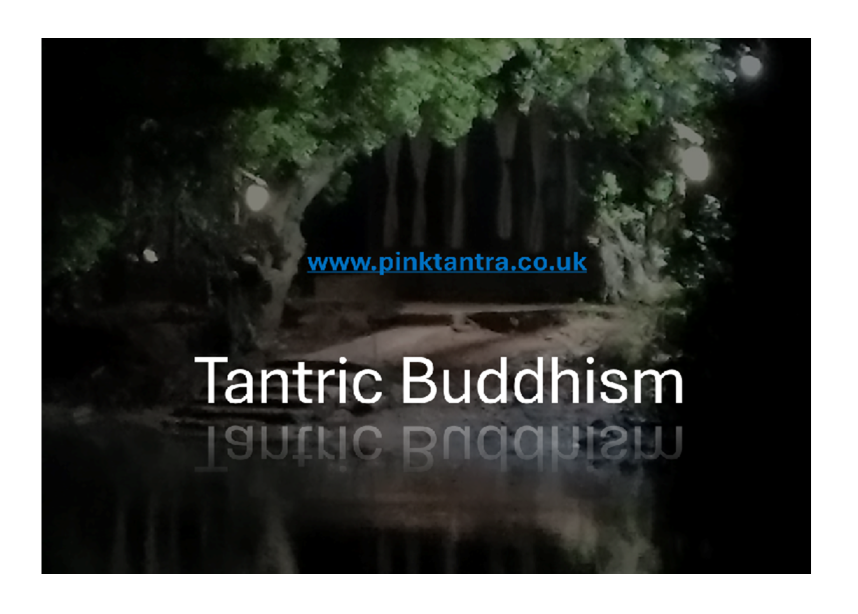Tantric Buddhism
Lama Yeshe, Tantric Tibetan Buddhist, who wrote Introduction to Tantra, which I have written about previously, says tantra is the path of joy and affirmation, where the purpose of the spiritual path is to uncover our essentially pure nature.
But how does Tantra and Buddhism align?
 I’ve been reading a few books recently around Tantra and Buddhism and thought I’d try and bring some cohesion to my thoughts here.
I’ve been reading a few books recently around Tantra and Buddhism and thought I’d try and bring some cohesion to my thoughts here.
There were two key strands of Tantric Buddhism, the Mantrayana / Tantrayana and the Vajrayana, coming respectively from Mahavairocana Sutra and Vajrayana Sutra, with Nagarjuna being seen as the patriarch of Tantric Buddhism around 150-250 CE (via the Mahayana tradition, especially that of Asvaghosha, who wrote The Awakening of Faith).
Tibetan Buddhism, via Padmasambhava, who write the Tibetan Book of the Dead (although not that it was actually called that when it was written, then it was called, as Sogyal Rinpoche clarifies in The Tibetan Book of Living and Dying, the Great Liberation through Hearing in the Bardo) brought these two strands together around 7-800 CE.
There are two key aspects which Tantric Buddhism and traditional Buddhism share in their aim to attain liberation; the 4 Nobel Truths and the Noble Eightfold Path. The 4 Noble Truths are (1) suffering (2) cause of suffering (3) end of suffering (4) the path, which frees us from suffering, that being, the Noble Eightfold Path (1) right view and understanding, insight (2) right intention, unselfish (3) right speech, compassionate (4) right action, manifesting compassion (5) right livelihood, ethical (6) right effort, wholesome (7) right mindfulness, whole mind-body awareness (8) right concentration, meditation. Here ‘right’ means wise or skilful.
However, there are key aspects which differentiate them. Tantric Buddhism believe Samsara and Nirvana are inseparable (that is, there is no difference between the worldly and the spiritual). This reflects Asvaghosha’s notion of Suchness, where the Universal and the Particular are two complementary, not contradictory, aspects. It is only ignorance (a void of enlightenment) that stops us from recognising this.
Another differentiating aspect is the need to harmonise our energies (bringing a focus to our feminine) where compassion and wisdom come together for transcendence to our non-dual nature. Again this reflects Asaghosha’s earlier writing around the triple personality, by which he meant (1) a pantheistic approach to Deity Yoga (2) consciousness demanding embodied infinite love and infinite wisdom (feminine/masculine energies in harmony), and (3) karma, the notion of causation regulating our ethical and physical world.
A point worth noting is that in Tantra we often talk of Brahmacharya, often mistakenly referred to as the cessation of sexual activity (celibacy). One of the books that has really helped clarify this for me is Alan Finger's Tantra of the Yoga Sutras. He says "Brahmacharya means aligning the creative force in us with the greater intention of Brahman" Nothing to do with celibacy per se. Further, he says "brahmacharya has taken on a very specific meaning of dedicating the procreative energy to Brahman by abstaining from sexual activity. It is important to remember, though, that this meaning of the word developed within a specific religious context."
This is worth noting as Asvaghosha talks of cessation as meaning tranquillity, which we need to bring into harmony with intellectual insight. This has relevance as people need to practice (1) intellectual insight to cultivate merit and cure us of narrow-mindedness and scepticism which stops us connecting to compassion, and (2) cessation to cure us from “intimidation at the thought of birth and death” and being stuck in the pleasures of worldliness, stops us from attaining the samadhi of suchness.
Bringing it all together
To my way of thinking, taking my lead from the Noble Eightfold Path, Tantric Buddhism comes across as more compassionate and insightful than traditional Buddhism. Bringing a harmony of the feminine and masculine energies (leaving aside my thinking around gendered language in Tantra) offers a gentler, more humane, worldly approach to spirituality.
One, I think (hope!) that is reflected in (Pink) Tantra; that harmony of left and right, red and white, feminine and masculine energies, compassion and intellectual insight.
Connect on Twitter / Instagram / Facebook
Message me direct if you are interested in mindful, embodied, trauma-informed, or spiritually-informed 1-1 coaching robert.pinktantra@gmail.com
See my new course Kundalini Tantra Yoga – Working up the Chakras, due to start Monday 9 September 2024, 7.30am BST
See my personal development / personality profiling book DISCover the Power of You published through John Hunt Publishing Ltd, 2017. ISBN: 978-1-78535-591-2
And for those who enjoy historical fiction, stories of underrepresented life’s, see my first novel Fermented Spirits published through Austin Macauley Publishers, 2022. ISBN-13: 978-1398437159